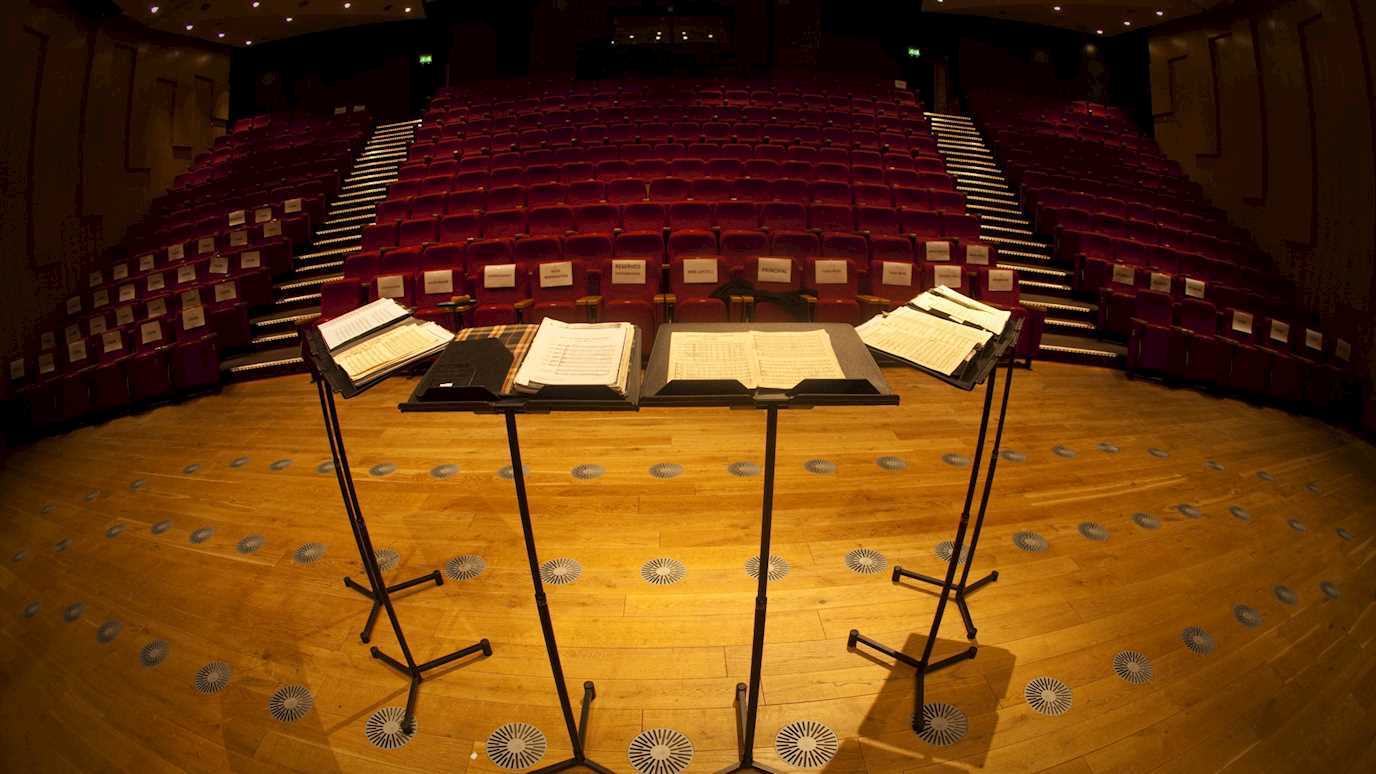Musical Theatre and Popular Songs
by Professor Julie Brown, Royal Holloway University of London
Historical Context
1. Stage musicals, film musicals, and wider popular song culture are intimately entwined. They feed off each other.
2. Sung numbers in musical theatre often closely relate to, and/or play with the conventions of, American popular song form. This can provide insights into why some develop separate lives as stand-alone popular songs.
3. The concept of the ‘integrated musical’ that crystallized from the reception of Oklahoma was more ideological than real. (NB: Distinguish this term’s application to stage musicals from its slightly different use in relation to film musicals.)
4. The promotion of commercial music, including musical theatre, is multifaceted. Songs from musicals were also popularised through sales of sheet music, cast recordings, and the release of stand-alone singles often played on radio, in night clubs, etc.
5. Key ‘popular song’ contexts in which from MT songs have separate lives are:
• Jazz: many MT songs later became jazz standards: e.g. ‘All the Things You Are’ (Very Warm for May – Jerome Kern); ‘The Lady Is a Tramp’ and ‘My Funny Valentine’ (Babes in Arms – Richard Rodgers), ‘All Through the Night’ (Anything Goes – Cole Porter); ‘Til There was You’ (Music Man – Cole Porter), ‘Mood Indigo’ and ‘Caravan’ (Sophisticated Ladies – Duke Ellington)
• ‘Film musicals’, though you need to distinguish the Hollywood form from later filmed versions of stage musicals. See in particular ‘catalogue musicals’ of the 1940s and 1950s. NB: Some film musicals have since been turned into stage musicals (e.g. Singing’ in the Rain)
• JukeBox musicals – themselves recent versions of the’ catalogue musical’, i.e. the songs, typically the catalogue of a band or singer, already exist and a plot is invented to showcase them (e.g. Mamma Mia, We Will Rock You, etc.)
• ‘Concept albums’ and singles released early to pave the way for a new stage musical (e.g. ‘Don’t Cry for me Argentina’ from Evita; ‘Jesus Christ Superstar’ and ‘I Don’t Know How to Love Him’ from Jesus Christ Superstar…)
Suggested Studies
1. An American in Paris (Vincente Minnelli, 1951)
• Look up the songs and their previous lives, especially in popular lyric theatre.
• How well do the songs fit their new dramatic context on screen?
• How does this ‘catalogue (film) musical’ of Gershwin songs relate to more recent forms of musical theatre such as the jukebox musical (e.g. Mama Mia)?
2. Jazz Standards
• What proportion of the much-repeated jazz standards identified in Ted Gioia, A Guide to the Repertoire (Oxford University Press, 2012) originated in musical theatre?
• What are some of their common musical traits, and why might these traits have led to wider popularisation? (Consider e.g. song form, vocal range, technical difficulty for voice)
• Choose 3 or 4 songs and investigate their original stage contexts.
• With each of those 3-4 songs, compare subsequent performances with their original context. What do you think about the journey the songs have been on?
Additional Resources
1.imdb.com
This is now an extremely reliable resource, even for music credits. It is not always consistent with the way it offers information, however. Details usually relate to copyright credits at the ends of films, but they are not included if not legally necessary (e.g. a studio-era in-house orchestra performs an out of copyright classical composition for a soundtrack). However, re-used recordings of public domain composers are still included if the recordings are still in copyright. For ‘catalogue musicals’, all songs are usually listed. If the songs where previously used in other films, this is usually mentioned and a hyperlink provided. But if the songs were used in stage musicals or revues, this won’t necessarily be mentioned. However, you can google the song name and find that information quite quickly yourself.
2.Jeff Smith, The Sounds of Commerce: Marketing Popular Film Music (New York: Columbia University Press, 1998)
This is a landmark study of popular songs use in various corners of the music industry. Smith provides an excellent historical account of the context within which sheet music publishers, record companies, film and radio interacted increasingly closely, and came to depend more and more on each other. In effect, it is a history of global media corporations from a musical perspectives. Though it doesn’t deal directly with musical theatre, the book does deal closely with film; musical theatre is often found between the cracks.
3.Rick Altman, The American Film Musical (Bloomington: Indiana University Press, 1989)
In this thorough, albeit sometimes a bit theoretical, account of the American film musical genre, Altman identifies a number of genre subtypes, and discusses the structure of the musical along the way.
4.John Kenrick, Musical Theatre: A History, 2nd edition (Bloomsbury, 2017)
This is a really useful history of the musical theatre, which will repay your investment!
5. Tim Carter, Oklahoma!: The Making of an American Musical (Yale University Press, 2007)
Carter comes from solid base in archival musicological research (Mozart as well as music of the late Renaissance), and directs his skills towards the Rodgers and Hammerstein archive. It’s a great achievement, and full of lots of detail. He is particularly good here at identifying the ideological context within which the concept of ‘integrated musical’ emerged.
6. Tim Carter, Rodgers and Hammerstein’s Carousel (New York: Oxford University Press, 2017)
Similar comments as above. A thoroughgoing account of this musical. The last word in terms of correct sources, etc. Tim is also a terrific music analyst.





















